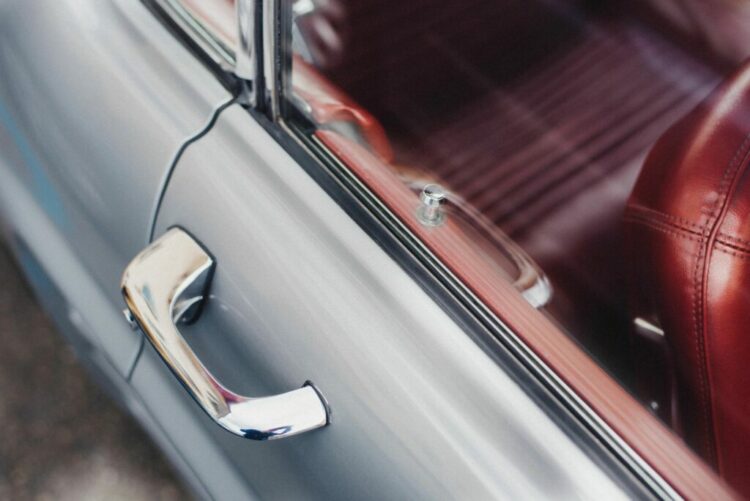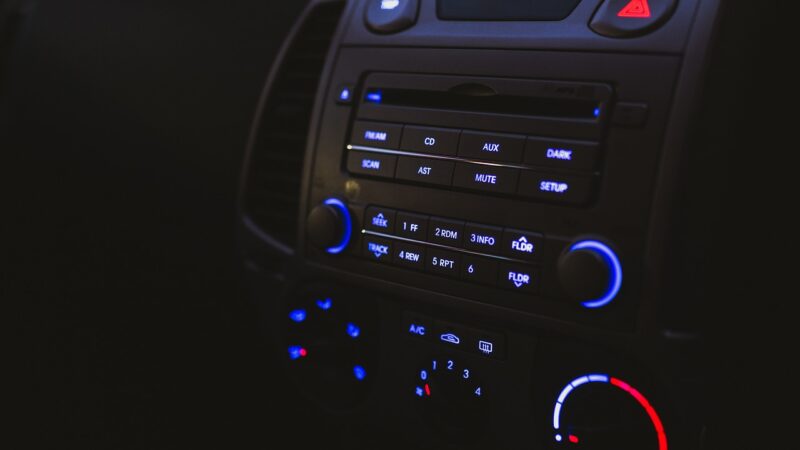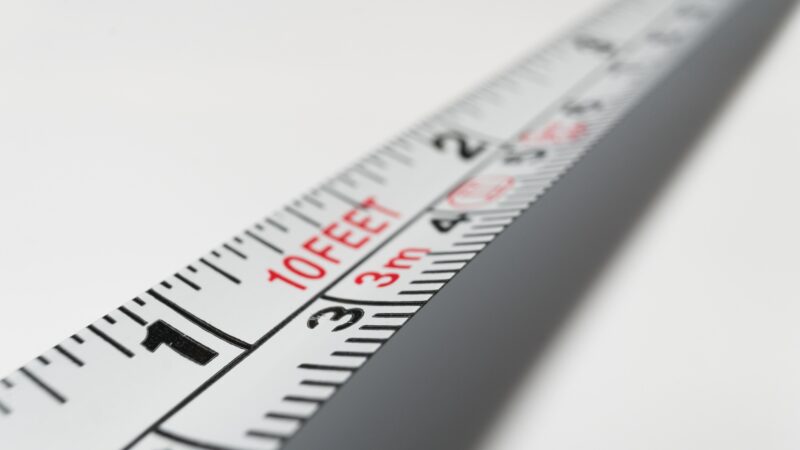Fatmat Vs Dynamat – Which is Best for Your Car?

Fatmat Vs. Dynamat
One of the biggest, coolest upgrades you can make for your vehicle is adding in a custom sound system. It could be you’re adding a subwoofer for extra bass, looking to upgrade your 6X9 speakers, or doing a full system upgrade.
Whatever the case is, you want to make sure everything sounds fantastic. Doing the research on speakers, spending the money, and going through the installation can be a long process. Once you turn on the music, you’ll (hopefully) be greeted by amazing sounds that make you wonder how you ever even got by with your stock speakers.
One important step that many people don’t mention or simply forget is adding deadening material to your vehicle. These materials are incredibly effective at insulating sound, meaning outside noise or rattling car parts aren’t going to take anything away from your overall experience.
If you’re not sure if outside noise is interfering with your vehicle, try a small experiment. Keep your car parked in your driveway or in a parking lot and listen to your favorite song. Then, listen to that same song while driving down a busy street or the highway.
Of course, some sounds are unavoidable but that doesn’t mean you can’t improve your overall experience.
We know a thing or two about great speakers and we know that deadening material can take your system to the very top, as the all-important icing on the cake.
Besides keeping out any extra noise, sound-deadening materials serve to make your vehicle acoustically sound. If you’ve ever thought about it, your speakers are mounted in a metal enclosure. With them being in a metal box, you aren’t going to get the best sound imaginable. These materials help you achieve that sound.
The problem is that there are countless materials on the web. Take a look at Amazon or head to an auto shop and you’re likely to be greeted by so many different types you’ll probably walk out of the store empty-handed.
That’s why we wanted to review some of the most popular brands on the market and help you choose a material. Soon, you’ll be going from car audio upgrades to a perfect symphony hall-like experience for you and your music.
Dynamat
While you probably aren’t up-to-date on the latest and greatest sound-deadening materials out there (it’s certainly not the most exciting subject in the world), Dynamat has been the leader in the industry for many years now.
Not only do they have a cool name, but their materials are solid and work. You can’t stay around for so long without doing something right on a regular basis.
You’ll probably pay a bit more for this material, but it’s well worth it. It does a great job of cutting down on external noise while making your vehicle sound great.
They’ve got a wide range of products, something for just about every part of your car. You can find material for your doors, trunk, headliner, and the hood. Many people buy sheets for the whole car and wrap your whole cabin in it.
Even if you go with just partial coverage, you’re going to notice an immediate difference. During our tests, we found that it can reduce road noise between 10-20 dB.
If your budget is a bit higher, then Dynamat is a great choice all around.
FatMat
Another well-known deadening material, FatMat has been in the game for quite some time. While maybe not as cool of a name, FatMat still provides solid deadening materials at a much cheaper price than Dynamat.
While we can’t complain too much about FatMat, it’s pretty obvious that these materials don’t provide the same quality as Dynamat does.
FatMat is asphalt-based, meaning you’ll have to bear the slight odor that comes from the material on a regular basis. If you like the smell of a freshly paved road, then it isn’t all that bad.
FatMat falls short when the temperatures start to increase the adhesive starts to melt and the material will start to fall off. So if you’re someone who drives around in regularly high temperatures, it’s best to skip this one.
For those that want to trim pieces, FatMat tends to be a little bit more difficult to cut as opposed to their counterparts.
Hushmat
While it’s pretty obvious Dynamat is the king so far, we’re quite impressed with the materials that Hushmat brings to the table.
While you won’t get the noise canceling and top quality from Hushmat as you would from Dynamat, the price is significantly cheaper. It has great sound-deadening abilities, thermal insulation, and adhesion.
Hushmat, since it used butyl rubber, does not produce any overwhelmingly pungent smells. You’ll probably notice a slight odor right when you install them but after that, it won’t be anything noticeable at all.
They also perform quite well in the heat as we noticed no melting or strong smell from them either when subjected to higher temperatures.
Peel and Seal
Another alternative to Dynamat, Peel and Seal points out a solid product that does a pretty good job at lessening outside sounds and improves your listening experience. While it isn’t made specifically for car audio, it is pretty popular among DIY audio enthusiasts. As is the rule with the majority of products in this world, you’re going to get what you pay for.
Just like FatMat, this sound-deadening material is asphalt-based. Not only are you going to get that super strong asphalt smell (especially in high temperatures), long exposure to asphalt has also been linked to certain health problems such as headaches, skin rashes, throat and eye irritation, hard coughs, and in some cases skin cancer.
Don’t freak out the next time you drive by a paved road, but it’s not something you want to be exposed to on a regular basis.
Peel and Seal is much cheaper than Dynamat, but you’re going to lose a bit of quality when you make the purchase. If a budget is the main thing that’s holding you back, then you should take a look at Peel and Seal.
Things to Consider
When you’re shopping around for materials, you want to make sure that your purchase is going to do more than simply keep out unwanted sound and improve your acoustic experience. Below, we have a few things that you should look at in addition to cutting down on the sound.
Heat Performance and Insulation
You probably have friends that as soon as the sun comes out, they’re breaking out the fan hand and complaining about the heat. You may have others who are ready to hit the pool on the first day of warm weather.
Not all these materials are created equally, and some perform in heat better than others.
The main thing you want to watch out for is if the adhesive melts under high heat. A melting adhesive means the product is eventually going to come off and all your work installing it goes to waste.
If you live in a cold area, you want to see how well it keeps your car insulated. Keeping the heat in during the winter can be just as important as staying cool in the summer.
Odor
All of these products have a distinct smell, but you want to find one where the smell doesn’t linger. Those with asphalt tend to have stronger smells.
Heat can also be a huge influencer in the odor department. When the temperatures increase, you may start to notice a smell more and more.
We’re not going to tell you which smells you should and shouldn’t like, but if you don’t like strong odors flooding your car then you should look to which ones handle the smell better.
Trimming
Unfortunately, these materials aren’t going to come in the perfect shape. Every car is different and each one may have unique, contoured areas that will require you to trim the sheets or packs.
You will probably only find this information through consumer reviews, but some are definitely much easier to trim than others. We found FatMat as one of the more difficult to trim on the list.
Installation
Usually, installation shouldn’t take more than an hour but that largely depends on where you’re putting it and your relative experience.
Some packs come with installation kits that include tools like a roller. Rolling your material before applying it is key. If the kits don’t have a roller, then you’re going to have to go out and purchase one yourself.
Removal
What we found is the ones that were easiest to apply were often the most difficult to remove. Take that as you will, but removal can be pretty tricky on some.
Down the road, you may want to remove these materials because they’re not giving you the performance you want or you can’t take the smell anymore.
The “easiest†way to remove them is by taking dry ice and sprinkling it over the material. Some people choose to use heat, but that can be quite messy and time-consuming.
Closing Thoughts
While we definitely favor Dynamat in this case, we realize that your budget may not allow you to make such a purchase. Make sure you are doing plenty of research before making your purchase. You’re almost to the point of audio bliss and acoustic perfection.








